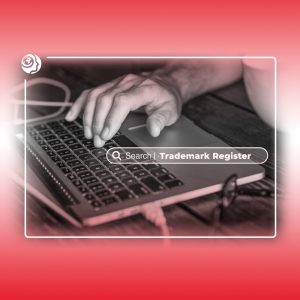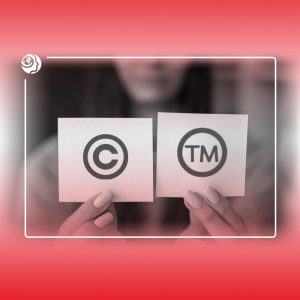In the modern business landscape, trademarks are more than just symbols or names—they are the essence of a company’s identity. A trademark distinguishes a business from its competitors, builds customer trust, and safeguards the company’s intellectual property. Registering a trademark is not just a legal formality; it is a strategic move that can significantly impact a company’s success. This article delves into the importance of trademark registration, the step-by-step process, common challenges, and practical tips to ensure a smooth and successful registration.
What is a Trademark?
A trademark is any sign, symbol, design, word, phrase, or even sound that identifies and distinguishes the goods or services of one business from those of others. It can be a logo, a brand name, a slogan, or even a specific color or packaging design. For example, the golden arches of McDonald’s, the Nike swoosh, and the Apple logo are all iconic trademarks recognized worldwide.
Trademarks serve two primary purposes:
Commercial Purpose: They help consumers identify and choose products or services they trust.
Legal Purpose: They provide legal protection against unauthorized use or imitation by competitors.
Why is Trademark Registration Important?
Legal Protection and Exclusive Rights:
Registering a trademark grants the owner exclusive rights to use the mark in connection with the goods or services it represents. This legal protection allows the owner to take action against anyone who uses the trademark without permission. For example, if a competitor uses a similar logo or name, the trademark owner can sue for infringement.
Brand Recognition and Trust:
A registered trademark enhances brand recognition and builds customer trust. When consumers see a registered trademark, they associate it with quality and authenticity. This trust can translate into customer loyalty and increased sales.
Market Differentiation:
In a crowded marketplace, a trademark helps a business stand out. It differentiates the company’s products or services from those of competitors, making it easier for customers to identify and choose the brand they prefer.
Asset Value:
A registered trademark is an intangible asset that can increase the overall value of a business. It can be sold, licensed, or used as collateral for loans. For instance, the value of the Coca-Cola trademark is estimated to be in the billions of dollars.
Global Expansion:
For businesses planning to expand internationally, trademark registration is essential. It protects the brand in foreign markets and prevents others from registering the same or a similar mark.
The Trademark Registration Process
Registering a trademark involves several steps, each requiring careful attention to detail. Below is a detailed breakdown of the process:
1. Conduct a Trademark Search
Before filing an application, it is crucial to conduct a comprehensive search to ensure that the desired trademark is not already registered. This search can be done through official trademark databases, such as the United States Patent and Trademark Office (USPTO) or the World Intellectual Property Organization (WIPO). Hiring a trademark attorney can help ensure a thorough search and reduce the risk of conflicts.
2. Determine the Appropriate Class
Trademarks are registered under specific classes that categorize goods and services. For example, Class 25 covers clothing, while Class 9 includes electronic devices. It is essential to identify the correct class(es) for your trademark. Registering in the wrong class can lead to rejection or limited protection.
3. Prepare and File the Application
The application must include detailed information about the trademark, such as its design, the goods or services it represents, and the owner’s details. In some countries, a specimen of the trademark (e.g., a logo or packaging) may also be required. The application is then submitted to the relevant trademark office along with the required fees.
4. Examination by the Trademark Office
Once the application is submitted, it undergoes a formal examination to ensure it meets all legal requirements. The trademark office may request additional information or modifications during this stage. For example, if the mark is too similar to an existing trademark, the application may be rejected.
5. Publication and Opposition Period
In many jurisdictions, the trademark is published in an official gazette or online to allow third parties to oppose the registration if they believe it infringes on their rights. The opposition period typically lasts 30 to 90 days. If no opposition is filed, the application moves to the next stage.
6. Registration and Certificate Issuance
If the application passes all stages without opposition, the trademark is registered, and a certificate of registration is issued. This certificate grants the owner exclusive rights to use the trademark in the specified class(es) for a set period, usually 10 years, with the option to renew.
Challenges in Trademark Registration
While trademark registration offers numerous benefits, it is not without challenges. Here are some common obstacles businesses may face:
Similarity to Existing Trademarks:
One of the most common reasons for rejection is the similarity of the proposed trademark to an already registered mark. Conducting a thorough search before filing can help mitigate this risk.
Descriptive or Generic Marks:
Trademarks that are too descriptive or generic are often rejected. For example, a mark like “Best Coffee” for a coffee brand may be deemed too descriptive to qualify for registration.
Costs and Fees:
Trademark registration involves various fees, including application fees, class fees, and attorney fees. For businesses registering in multiple countries, these costs can add up quickly.
Lengthy Process:
The registration process can take several months or even years, depending on the jurisdiction and whether any oppositions are filed. This can delay a company’s plans to launch new products or services.
International Registration Complexities:
Registering a trademark internationally can be complex, as each country has its own laws and procedures. However, systems like the Madrid Protocol simplify the process by allowing businesses to register in multiple countries through a single application.
Tips for Successful Trademark Registration
To navigate the trademark registration process successfully, consider the following tips:
Choose a Strong and Distinctive Mark:
A strong trademark is unique, memorable, and not descriptive of the goods or services it represents. For example, “Apple” for electronics is distinctive, whereas “Fast Delivery” for a courier service is not.
Conduct a Comprehensive Search:
Before filing, conduct a thorough search to ensure your trademark is not already in use. This can save time and money in the long run.
Work with a Trademark Attorney:
A trademark attorney can provide valuable guidance throughout the process, from conducting searches to filing applications and responding to office actions.
Register in Multiple Classes if Necessary:
If your business operates in multiple industries, consider registering your trademark in all relevant classes to ensure comprehensive protection.
Monitor and Enforce Your Trademark:
After registration, actively monitor the market for potential infringements. Taking prompt action against unauthorized use helps protect your brand’s integrity.
Renew Your Trademark on Time:
Trademarks must be renewed periodically, usually every 10 years. Failing to renew can result in the loss of trademark rights.
International Trademark Registration
For businesses with global ambitions, international trademark registration is a critical step. Here’s how it works:
Madrid Protocol:
The Madrid System, administered by WIPO, allows businesses to register their trademark in multiple countries through a single application. This simplifies the process and reduces costs.
Regional Systems:
Some regions, such as the European Union, offer regional trademark registration systems. For example, the European Union Intellectual Property Office (EUIPO) allows businesses to register a trademark that is valid across all EU member states.
Country-Specific Registration:
In some cases, businesses may need to register their trademark directly in each target country. This can be more time-consuming and expensive but may be necessary for certain markets.
Case Studies: Successful Trademark Registration
Apple Inc.:
Apple’s iconic logo and name are registered trademarks that have played a significant role in the company’s global success. The trademark has been vigorously protected, with Apple taking legal action against companies that use similar logos or names.
Coca-Cola:
Coca-Cola’s trademark is one of the most recognized in the world. The company has registered its trademark in numerous countries and classes, ensuring comprehensive protection.
Nike:
Nike’s swoosh logo and “Just Do It” slogan are registered trademarks that have become synonymous with the brand. Nike actively monitors and enforces its trademark rights to prevent counterfeiting and infringement.
Conclusion
Trademark registration is a vital step for any business looking to protect its brand and establish a strong market presence. It provides legal protection, enhances brand recognition, and adds value to the business. While the process can be complex and time-consuming, the benefits far outweigh the challenges. By following the steps outlined in this guide and seeking professional assistance, businesses can successfully register their trademarks and secure their place in the competitive global market.
Call us now:










